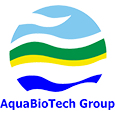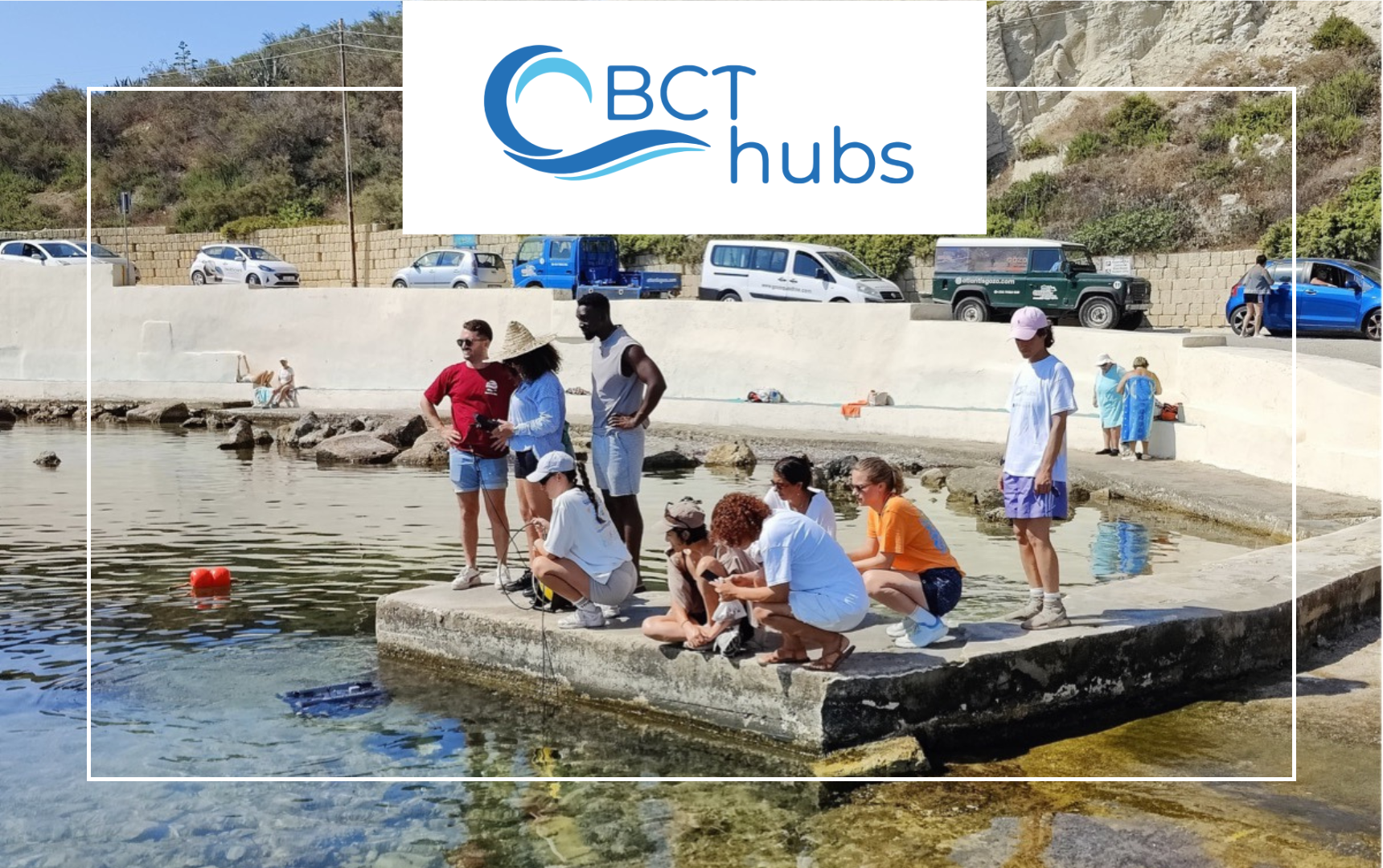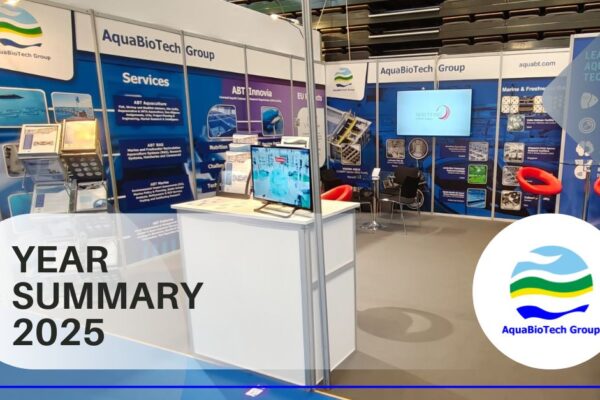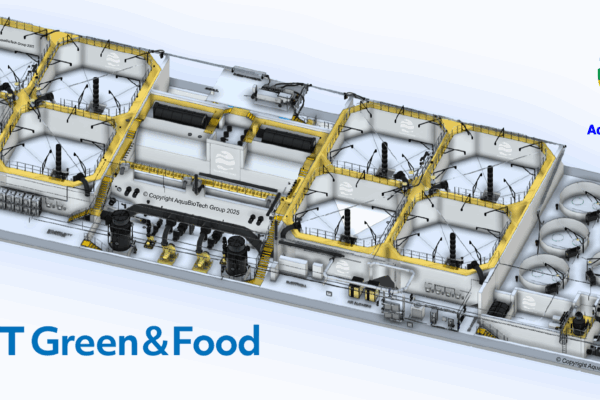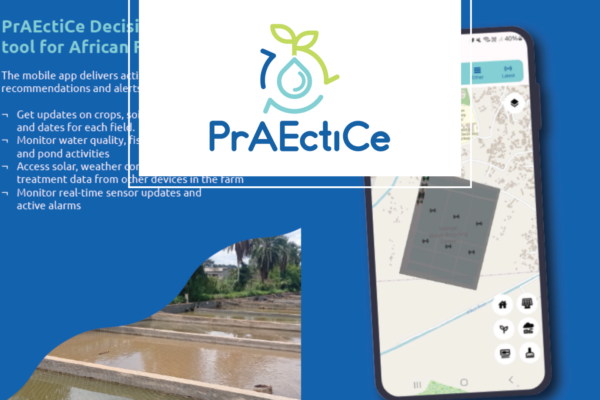As part of the BCThubs Malta Training Camp, jointly co-organised by our RDI project coordinator and the Malta HUB Training and secondments leader – Ines Boujmil – along with the Malta HUB partners from DAN EUROPE, Institute of Tourism Studies (ITS) and the Superintendence of Cultural Heritage (SCH), we are thrilled to communicate a training milestone achieved by AquaBioTech Group: we have completed our training workshop titled “ROV Applications | Surveying & Data Collection”, conducted by our marine experts Francisco M. Suarez and Justin Galea on 7 and 8 July, 2025 and hosted by the Institute of Tourism Studies (ITS) in Gozo, Malta.
This ROV training has a diversified range of sessions, including the (I) theoretical detailed section both hosted in our project partner’s e-learning platform (DAN) and explained by our trainers in presentations during the first full day of the workshop.
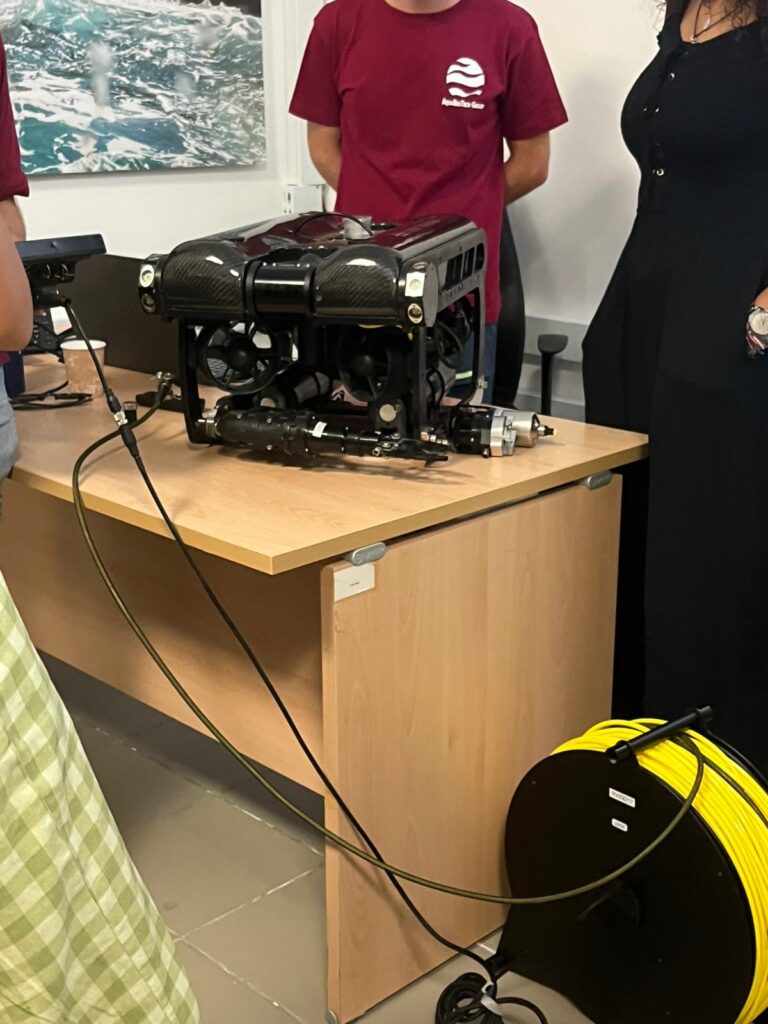
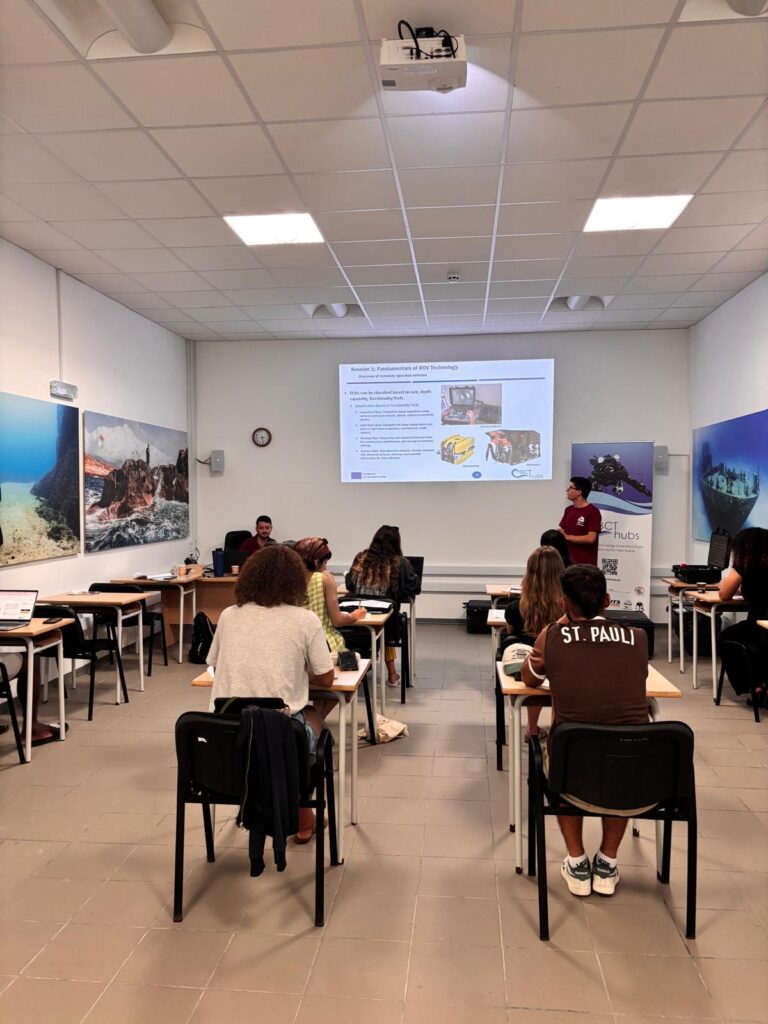
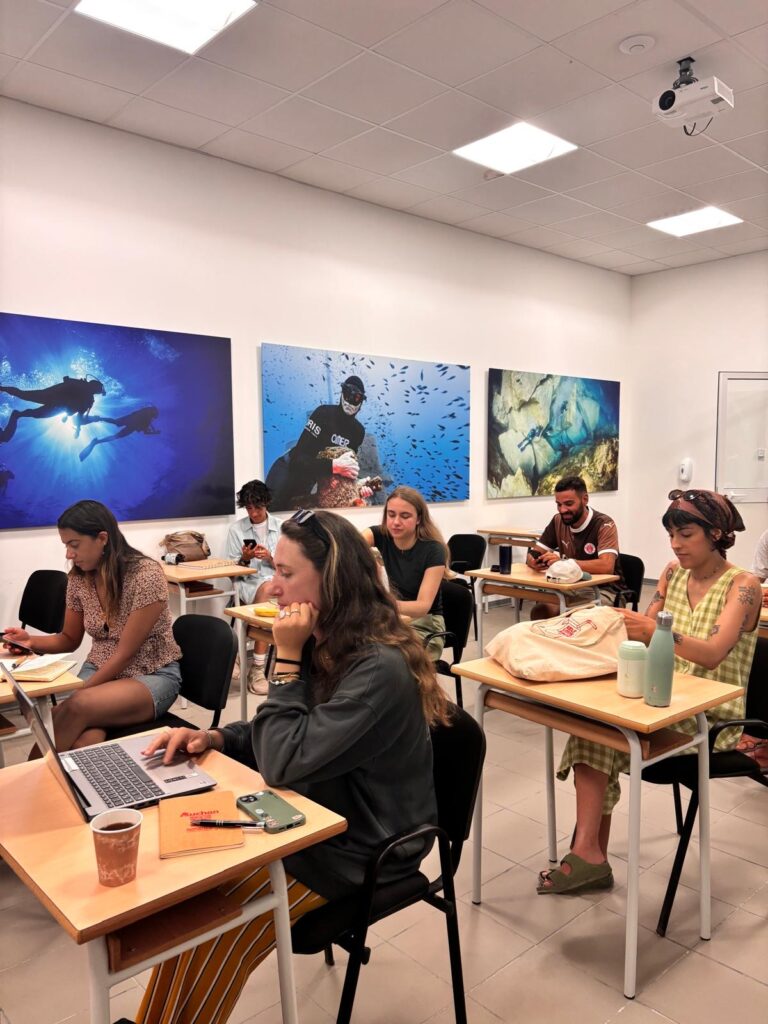
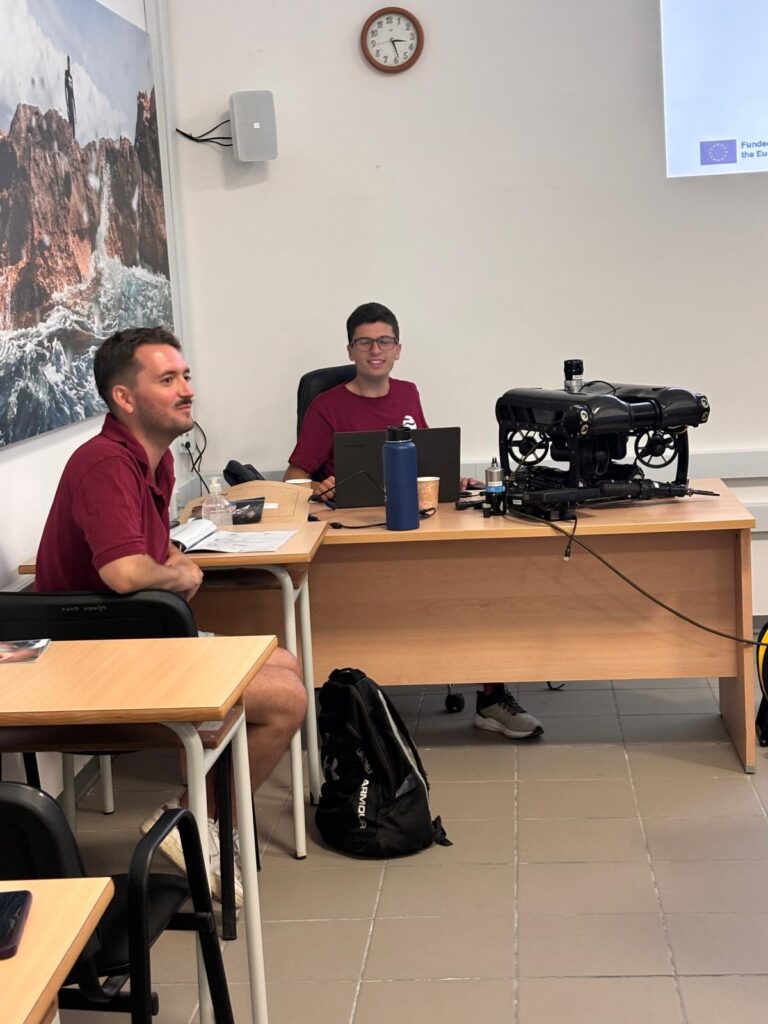
The theoretical sessions included:
- Session 1: Introduction to ROV Technology and Operation, and fundamentals.
- Session 2: ROV Mission Planning and Preparation, which involves (a) (Pre-mission preparations: Equipment checks, safety procedures, and risk assessments) and (b) (Developing Mission Plans, Dive Profiles, and Survey Protocols for Specific Applications).
- Session 3: ROV Piloting and Control
- Session 4: ROV Safety and Emergency Procedures Session 5: Introduction to Underwater Surveying
- Session 6: ROV Imaging and Video Data Collection.
On day 2 – 8 July 2025 in the morning – the (II) ROV practical training took place at Xwejni bay, where all students were trained by both Francisco and Justin on how to deploy and pilot the ROV from shore.
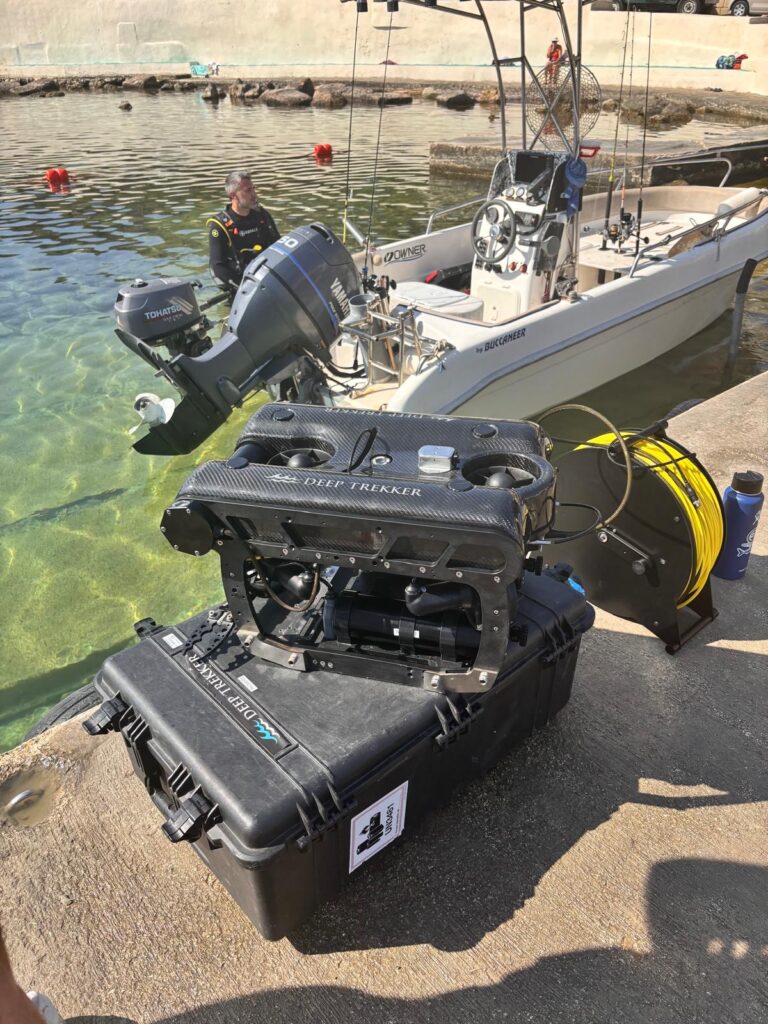
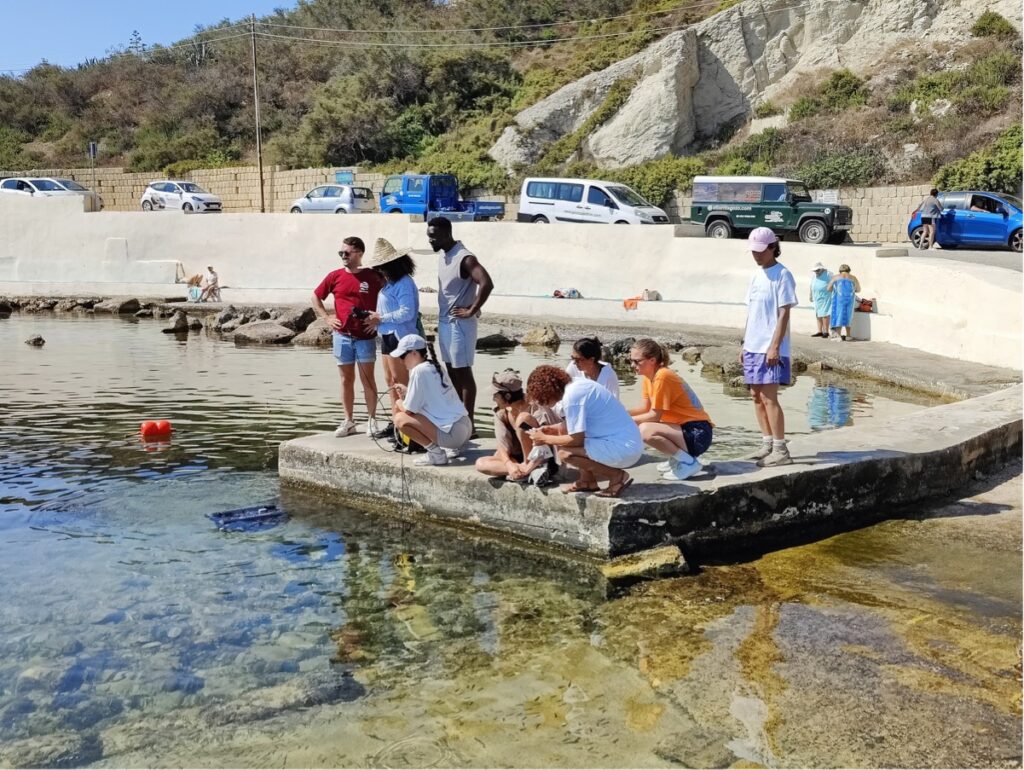
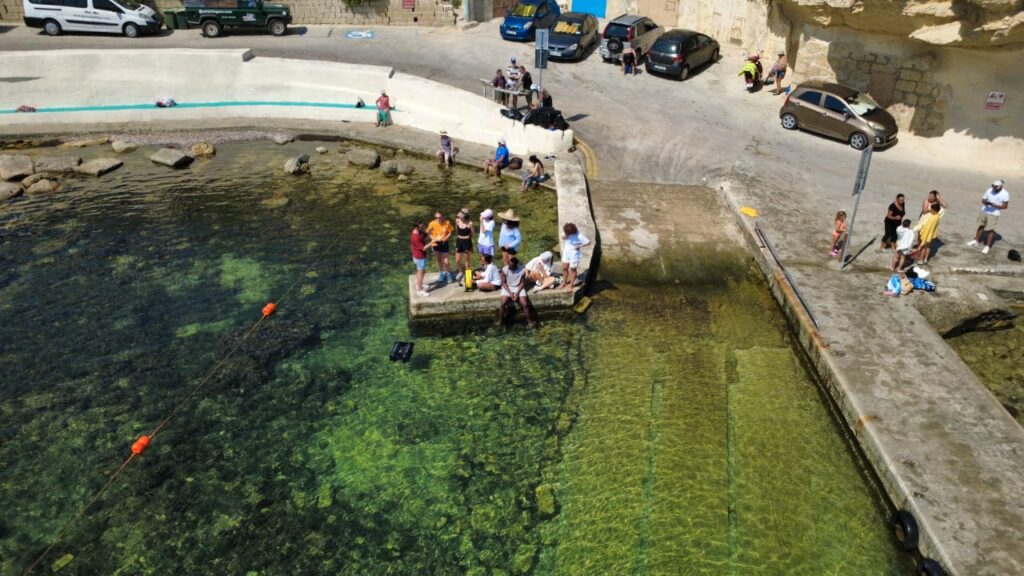
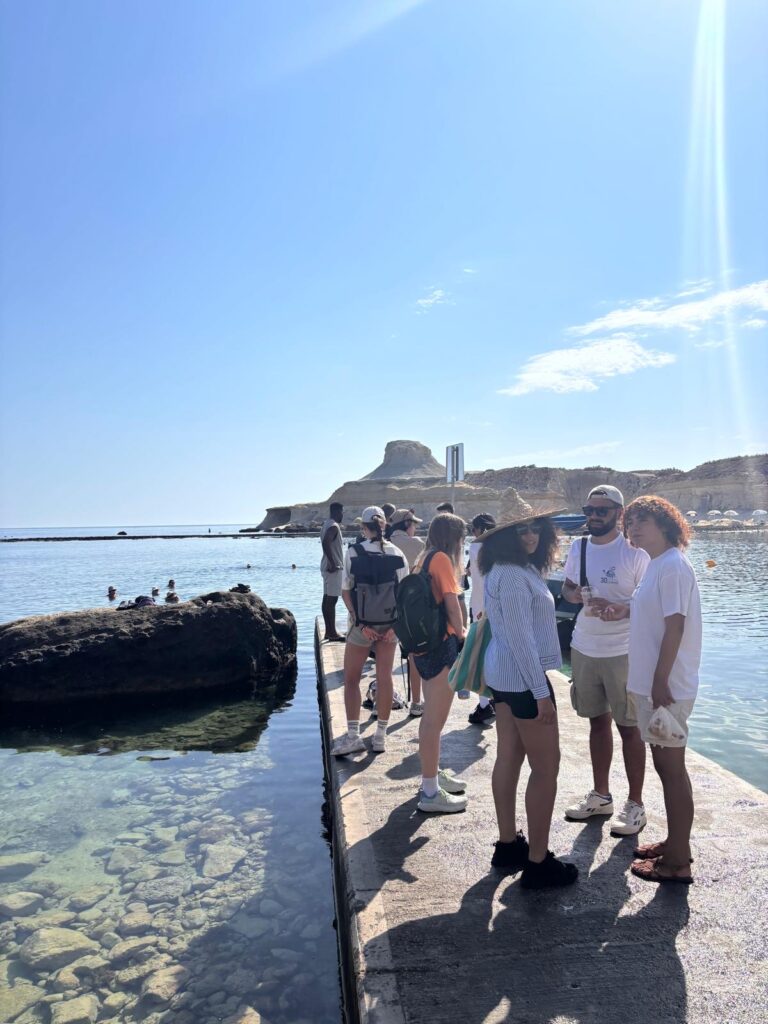
The afternoon and last session (III) focuses on “Data Processing, Analysis, and Reporting”.
Our ABT trainers conducted a practical session in QGis on:
- Basic QGIS Operations Step-by-Step
- Creating XYZ and WMS connections
- Data import and visualization
- Interpolation (advanced)
- Basic 3D model
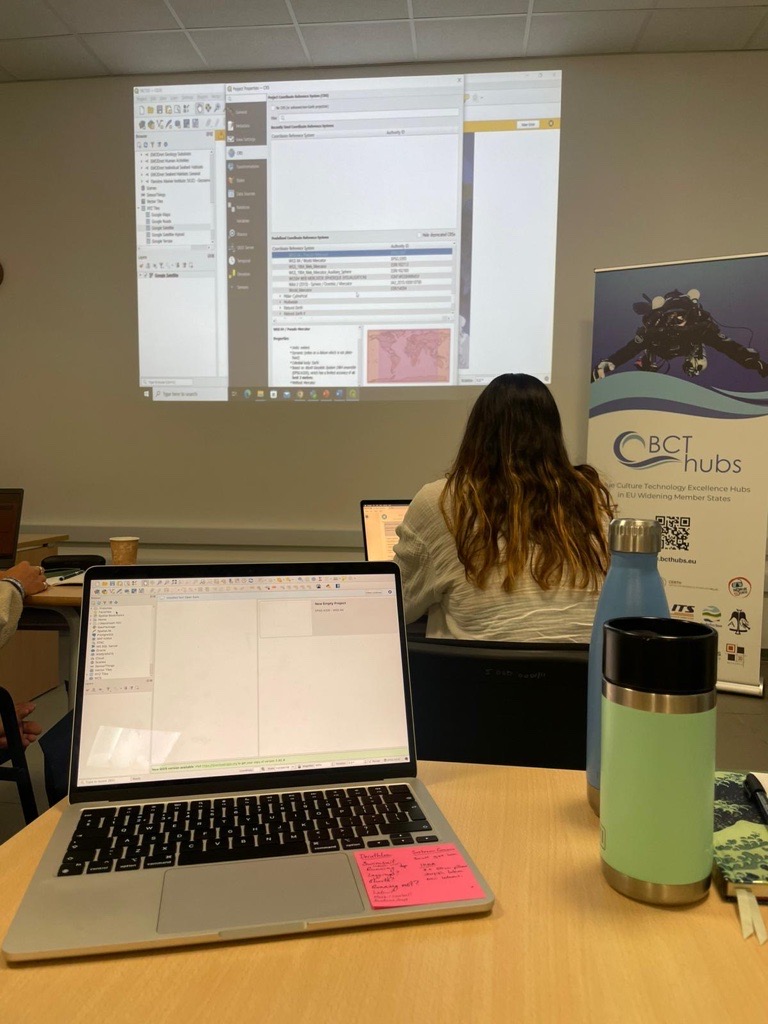
The Malta Training Camp was also designed to combine both training and secondment activities, as part of the knowledge sharing process among project partners within the framework of the BCThubs project. The duration of this event was fixed for two weeks – as the minimum secondment period – which highly depends on the availability of Greek and Bulgarian partners. In doing so, our project partner from ITS hosted during this 2-week training three (3) secondees representing the Greek and the Bulgaria hubs: Lydia Stergiopoulou (ATL), Kiril Grigorov Velkovsky (APROM) and Rosen Todorov Georgiev (APROM).
ROV applications in the Underwater Cultural Heritage (UCH) sector within BCThubs project?
The Remotely Operated Vehicle (ROV) is an essential equipment in UCH, which can be used in optical surveys as a data acquisition tool to process video inputs from the underwater cultural heritage assets, and therefore to detect potential degradation at the cultural heritage assets. The output could be a habitat mapping, an assessment of the impact of recreational diving on sensitive habitats or shipwrecks encrusting organisms, a constant monitoring of the diving pressure on selected hotspots, and a combination of all of them.
To explore the technologies used within the framework of the project BCThubs, please find the poster we designed here during the European Ocean Days.
Day 2 – Invasive and alien species monitoring in the Mediterranean Sea led by ABT | 10 July 2025
Another exciting BCThubs training was accomplished titled: “Alien and Invasive species monitoring in the Mediterranean Sea”. This theoretical course was elaborated by our Head of RDI department Dr. Simona Paolacci and the practical diving training was conducted by our expert marine biologist Francisco M. Suarez in collaboration with our esteemed partner Dr. Simon Caruana from Institute of Tourism Studies (ITS), in Xatt l-Ahmar, Gozo on 10 July 2025.
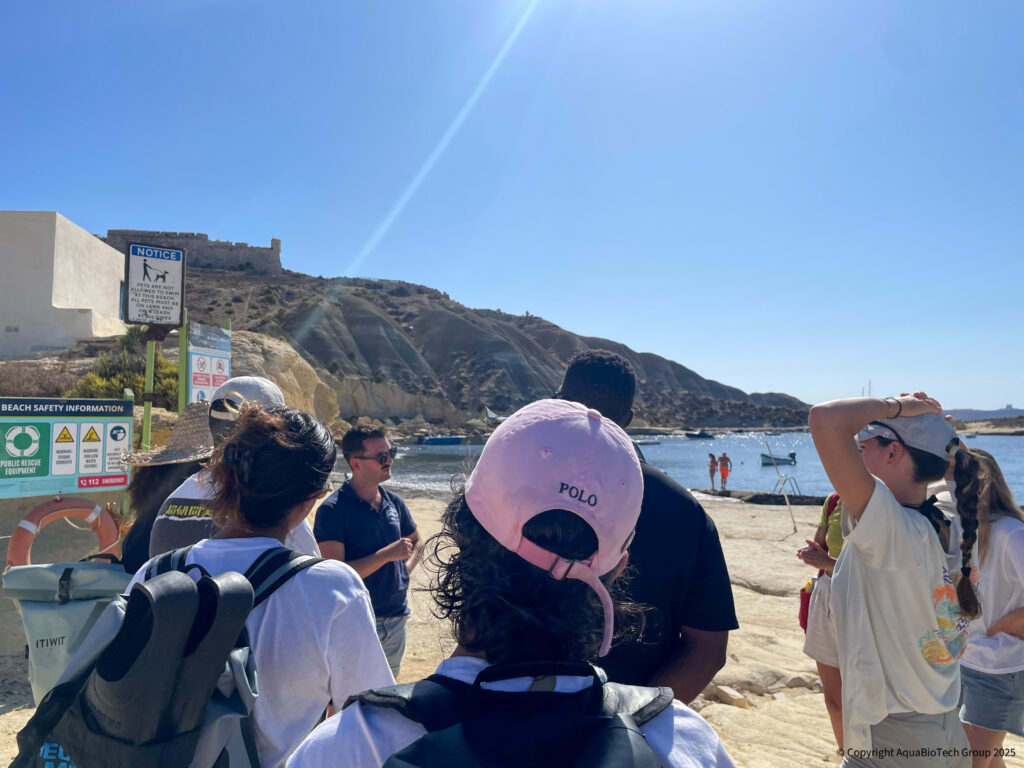
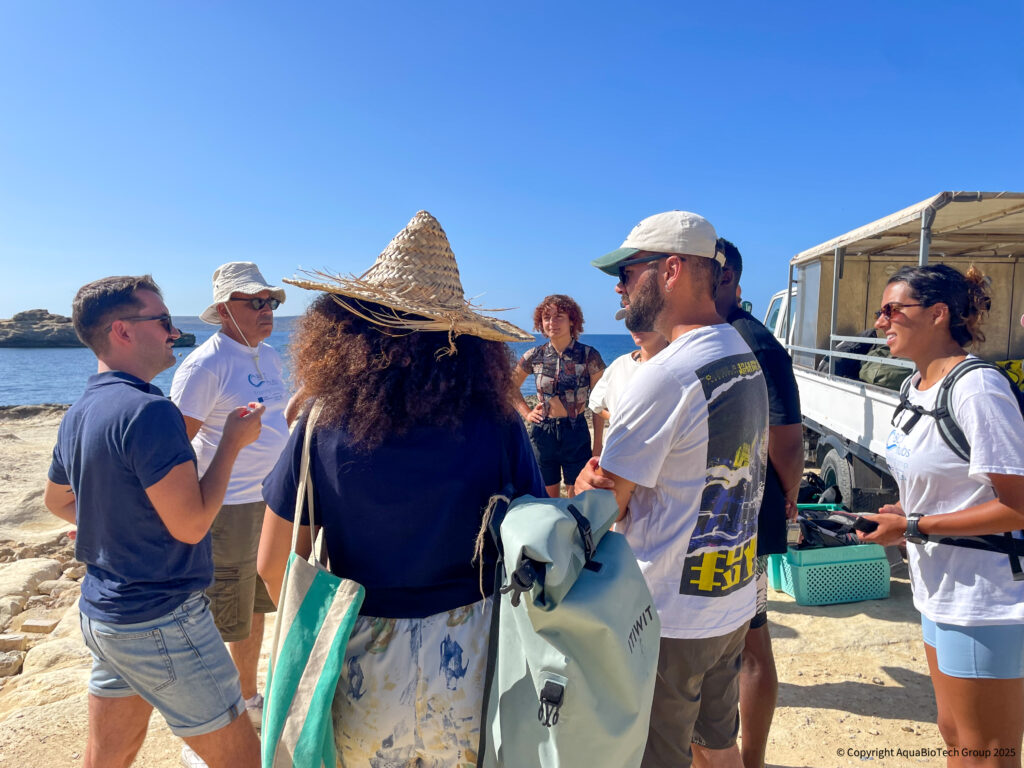
The theoretical course covered the (I) definitions of invasive species is a non-native species (alien), Anthropogenic activities, causes of transfer of organisms and carriers of invasive species, biological invasions, EU legislation minimising and mitigating the adverse impacts posed by these species as well as the Mediterranean hotspots for invasive species.
Another section of this course covered (II) Most invasive fish and arthropods in the Mediterranean and (III) Invasive Algae and plants in the Mediterranean and their identification process. Last but not least, the practical section (IV) Assessing presence and coverage of invasive species described the transect placement and quadrats for the technical diving application.
The practical section of this course was carried out as follows:
1.Tools and equipment: diving equipment, 100m transect on the seabed, a 50 cm2 quadrat, underwater cameras to take pictures of the quadrats and videos of the transect, and underwater slates to collect data as students and the secondee conducted the monitoring.
2. The detected species:
-
- Caulerpa taxifolia (most abundant species)
- Caulerpa racimosa, and
- the trumpetfish (Fistularia commersoni).
3. Trainees were divided in groups of 3 and were tasked with placing the quadrat every 5 m on our first run, while taking pictures of the quadrat, indicating whether any of the invasive/alien species were present or absent. If present, counting the percentage of coverage of said species in the quadrat.
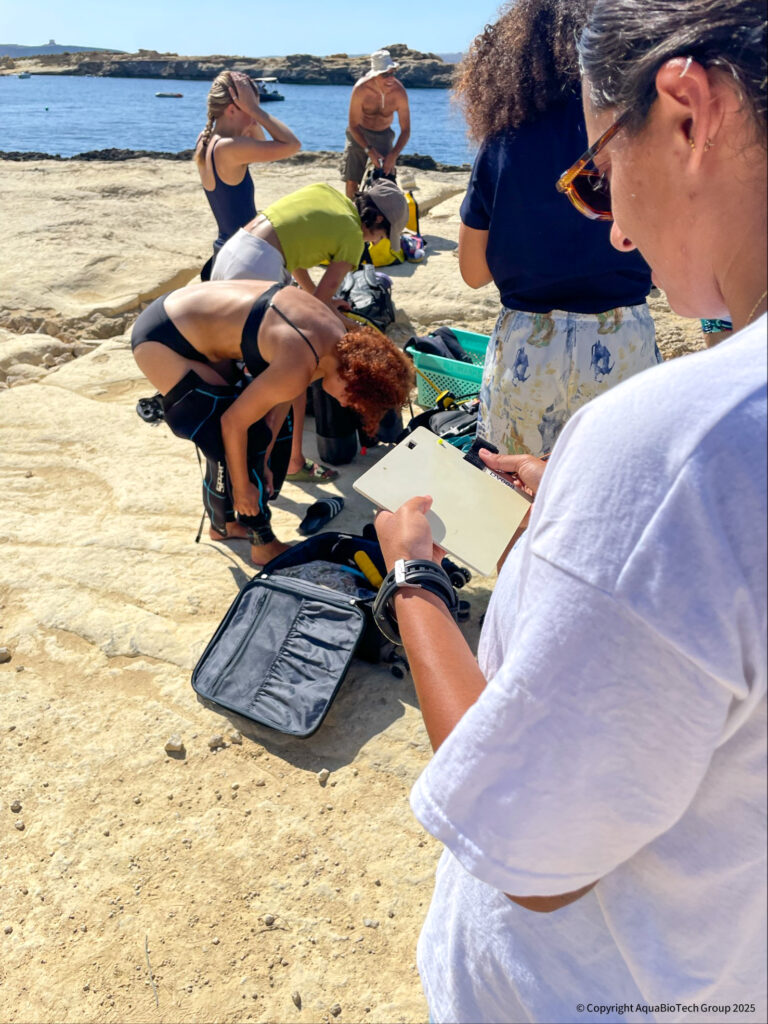
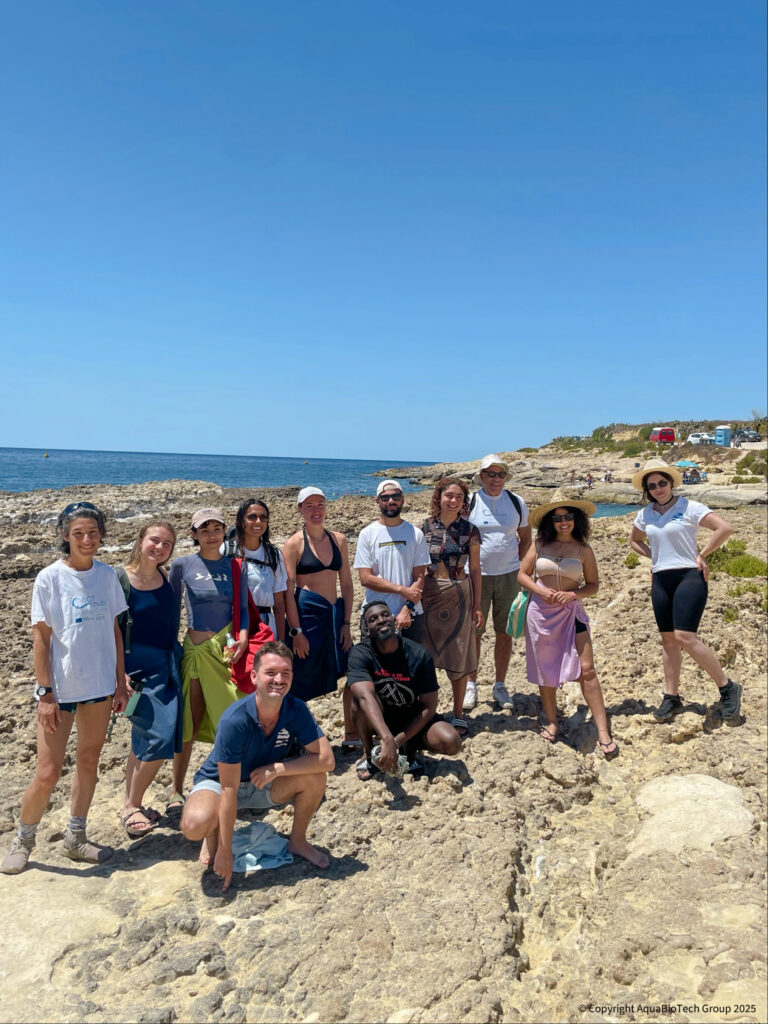
The Malta Training Camp was also designed to combine both training and secondment activities, as part of the knowledge sharing process between business and academia among project partners within the framework of the BCThubs project. In doing so, we were also thrilled to share this expertise with our project secondee representing the Greek hub: Lydia Stergiopoulou (ATL) joining our alien species diving training.
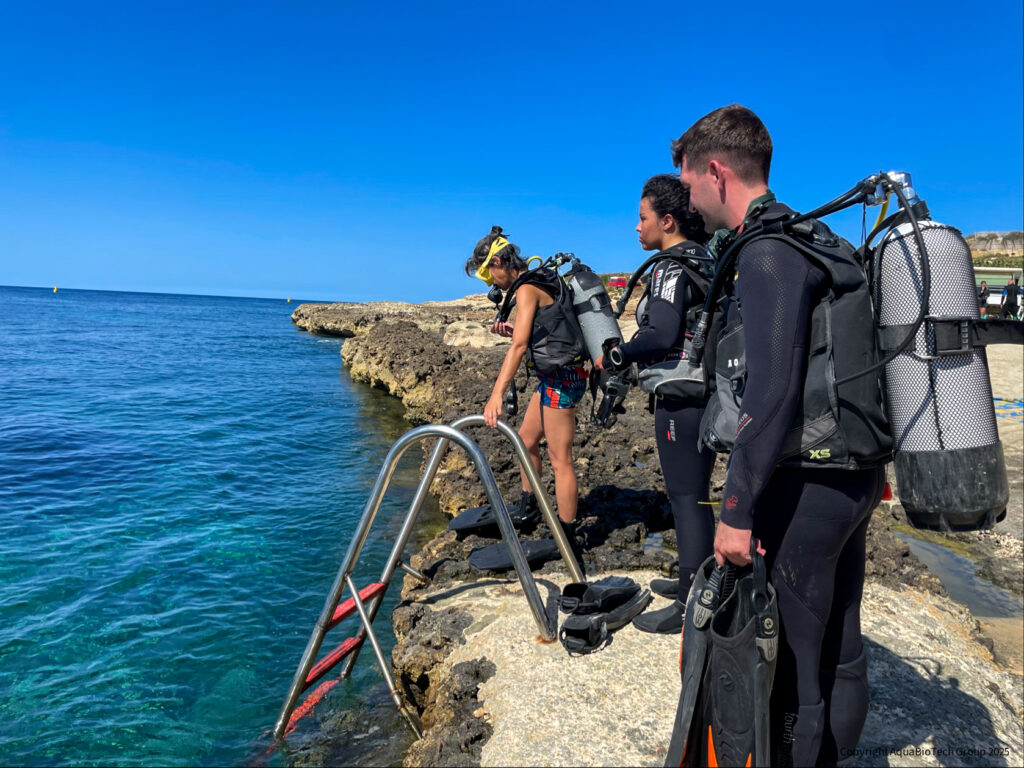
Why the monitoring of alien and invasive species is important in the Underwater Cultural Heritage (UCH) sector within BCThubs project?
The Monitoring of alien and invasive species is essential in the Blue Economy sector, as rising Sea temperatures make the Mediterranean more hospitable to warm-water species moving from the Red Sea via Suez Canal. When alien species become invasive, they disrupt marine ecosystems, threaten biodiversity, and pose challenges to fisheries, tourism, and even human health. UCH is highly connected to the tourism sector under the sustainable blue economy, which could be also impacted.
